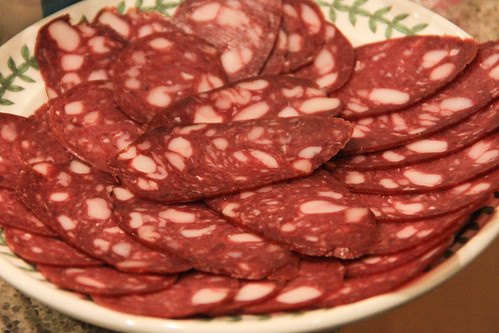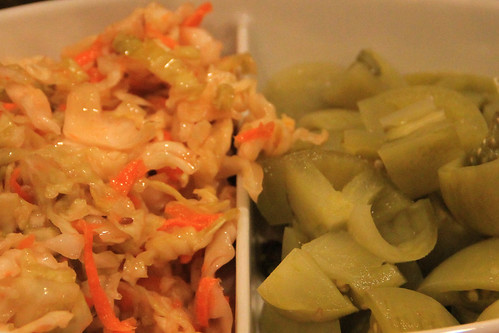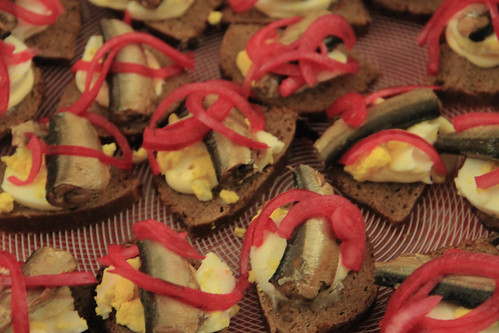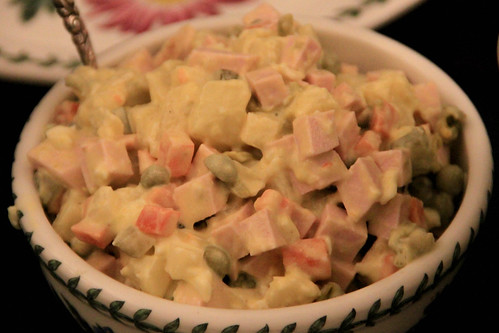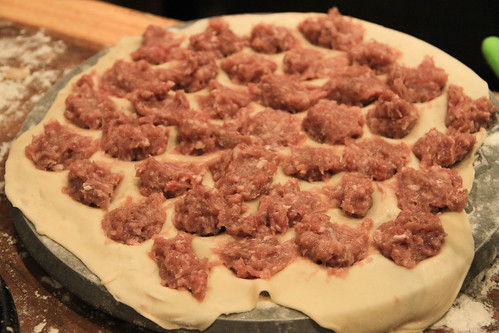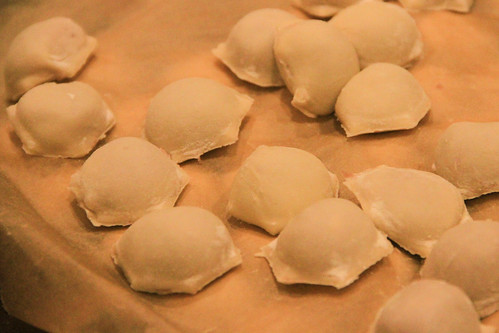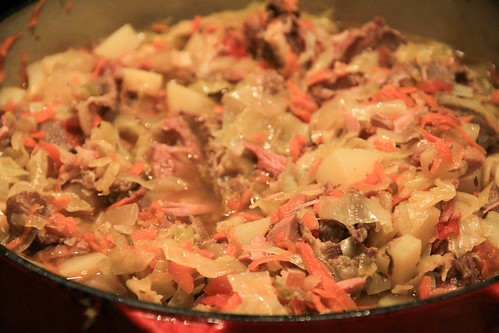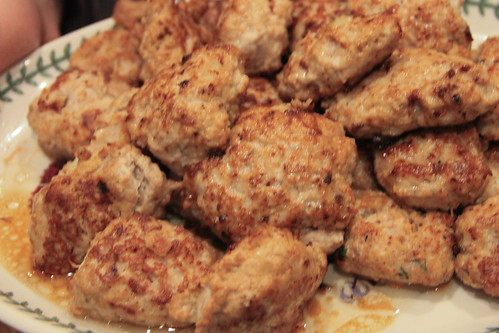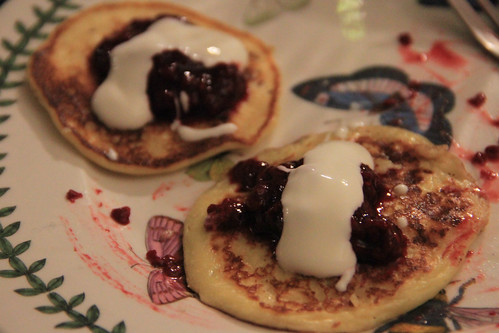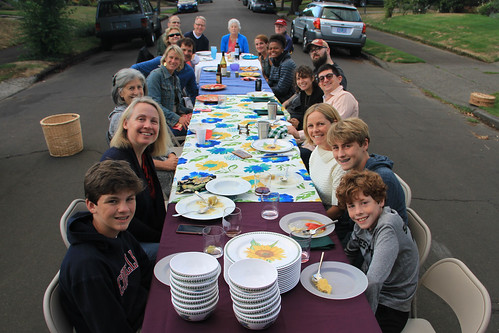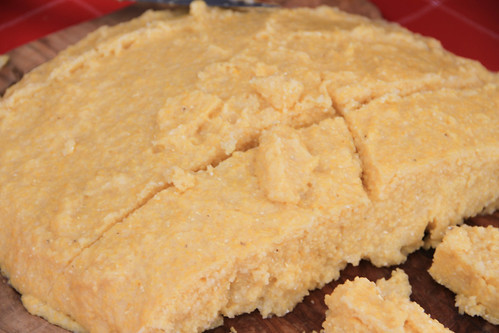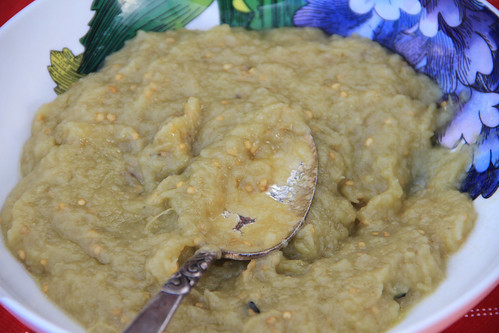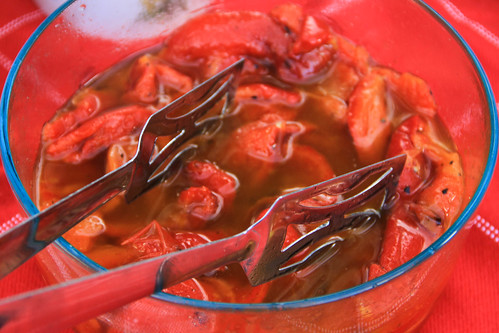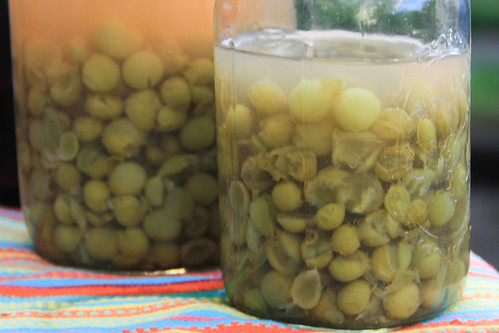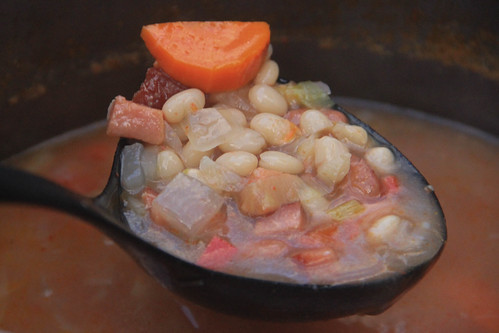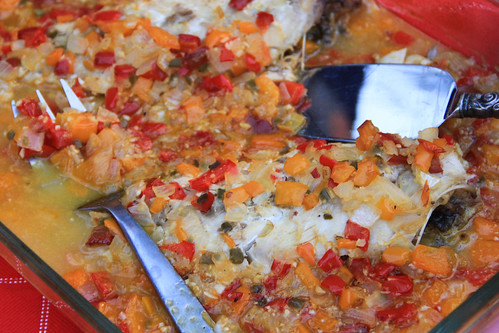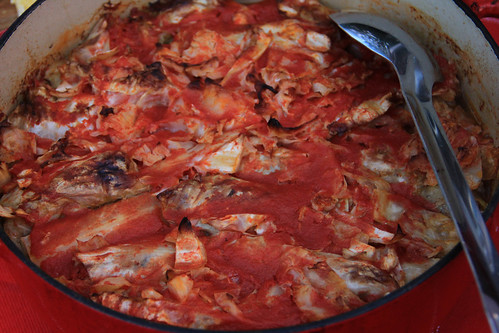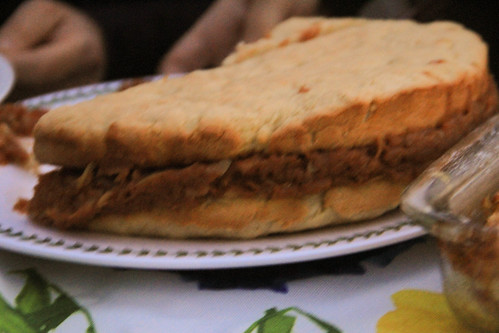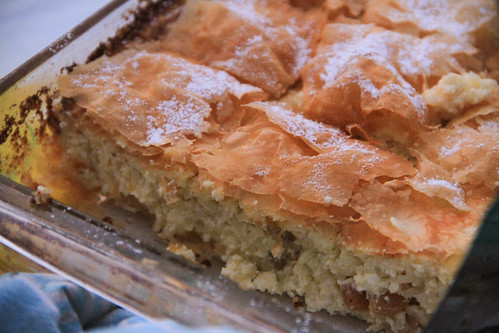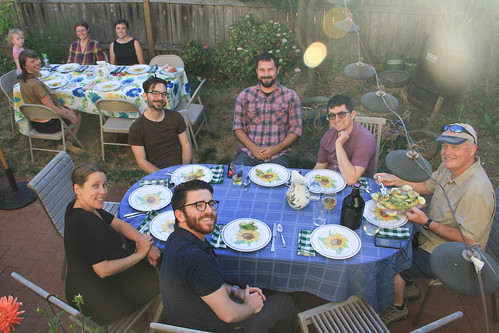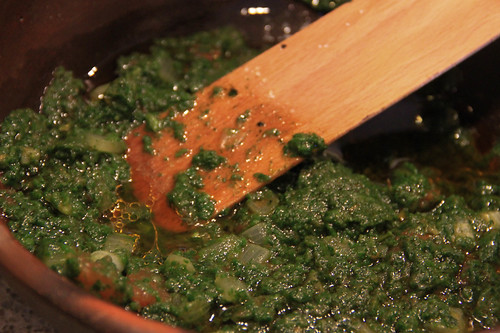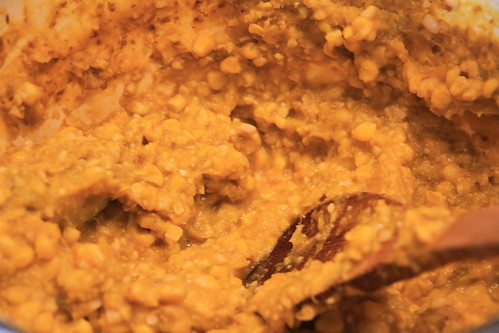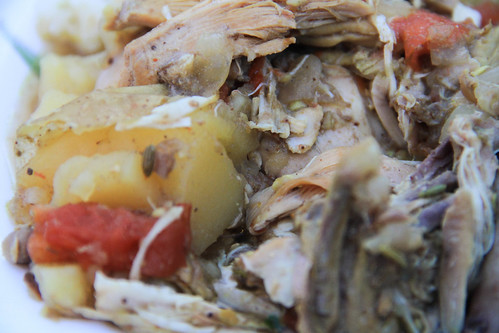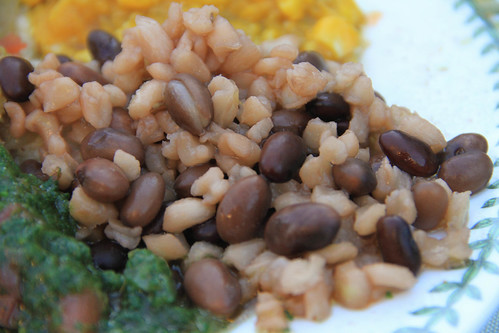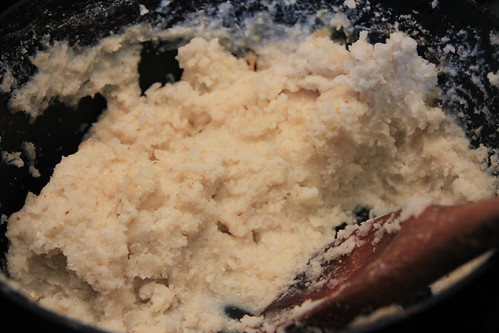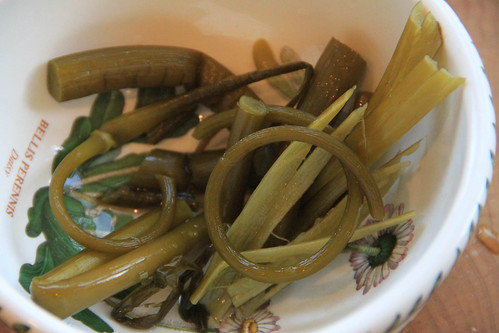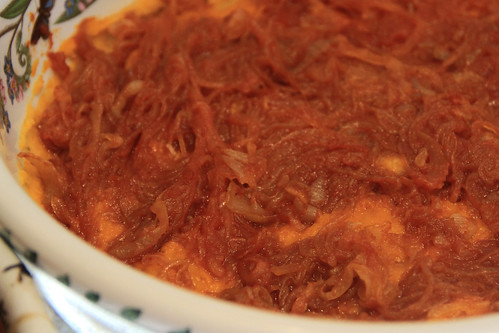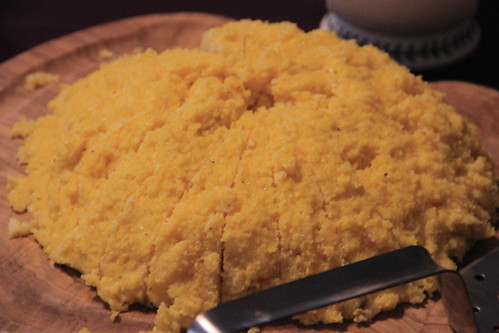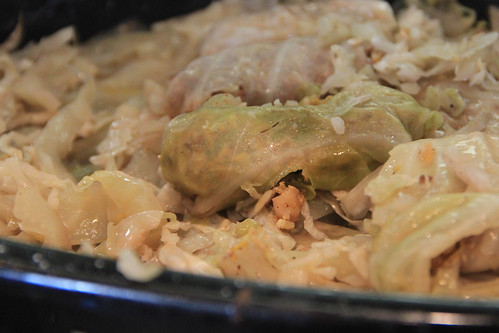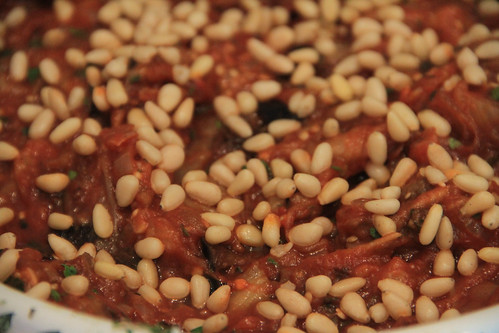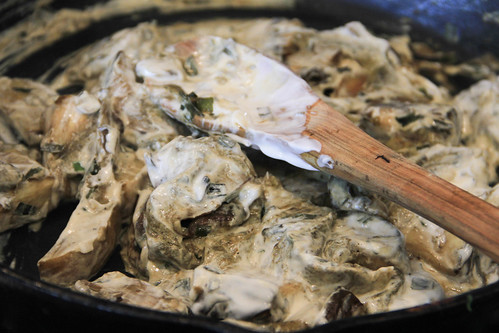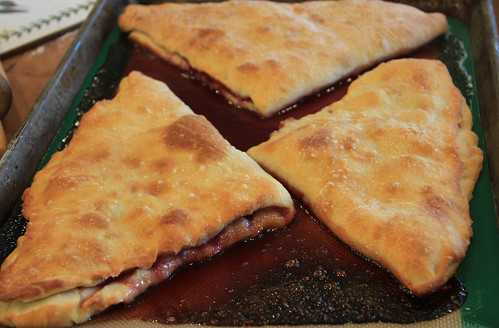Just about any broad-sweeping article about this small East African country begins with a reference to the genocide of the 90s and subsequent transformation into a harmonious nation that’s on the right track by many metrics. While both the highs and the lows distinguish Rwanda quite a bit from its neighbors, it’s food doesn’t so much: with a few small variations it’s a lot like the meals we’ve cooked for its neighbors Burundi and the Democratic Republic of the Congo. Well, with one important exception: Akabanga chili oil, which I ordered from Amazon to make the meal a bit more accurate. Meg, who volunteered with Peace Corps in the tea-plantation highlands, told us that inn Kinyarwanda “akabanga” means “little secret,” but the little droppers of this pungent and distinctively flavored stuff are apparently everywhere.
In addition to Meg, we had another guest, Robin, who lived in Kigali. Also on hand were Chitra, Marcia, Jeff, Melia, Marissa, Albert, and their guests.
Matoke | Steamed bananas | Recipe
Jeff, my buddy who’s taken many trips to central Africa with Mercy Corps, reports that “my personal experience is that the Ugandan version is far superior to the Rwandan.” Apparently the former is pounded and accompanied with a stew kinda like mashed potatoes, whereas the latter is as the photo shows: purely steamed bananas straight out of the banana leaves in which they were wrapped.
Apparently there is a particular type of green banana that is wildly common in this part of the world — in fact, Rwanda is said to have the highest per-capita banana consumption in the world — but it’s entirely unavailable here. I can’t even reliably find green cooking bananas like I could in New York. So I used green plantains, and I don’t know if that would have made it any more or less palatable to Jeff. In any event, it was kinda dry and crumbly and mildly sweet.
Ibiharage | Fried white beans | Recipe
Exactly what it looks like: oniony beans with a bit of oil. Pretty bland unless you go for a few drops of the Akabanga. The firm texture does play nicely with the soft gumminess of the ugali mush (which is so common in African countries that I’ve stopped giving it its own line in my meal writeups!).
Isombe | Cassava leaves with eggplant and spinach | Recipe
This is the fifth time I’ve cooked cassava leaves (Burundi, Central African Republic, Congo, and Madagascar being the previous), and even with the addition of other vegetables, I still didn’t like it.
I had assumed that the leaves were more fibrous, dry, and bitter from being frozen into a rock-solid ball, wrapped in a few layers of what seems like Saran wrap, and shipped for who knows how many weeks from Africa. But according to Robin, not only is this really kinda how the fresh version tastes, but I actually made it more interesting with the addition of other vegetables. Unlike previous times, when the substantial remaining stew ended up in the compost, Robin eagerly took a few quarts of the leftovers.
For the Mozambique meal, I used kale instead of cassava leaves for a recipe, and liked it quite a bit more. Going forward, I just might do this again. I’m all for going for authentic ingredients and flavors when possible, even if it’s not to my liking, but after five times and pounds of uneaten leftovers, I think I’ll just use other dark leafy greens.
Brochettes | Barbecued meat skewers
Without question, the most popular dish of the meal was the barbecued goat. This isn’t an at-home food, but rather a snack at a bar or part of a holiday meal.
With the simplest of preparations — just a bit of salt and pepper — the flavors came entirely from the fatty meat and the woody smoke. We served it with sliced onions and mayonnaise, which are apparently common accompaniments.
Icyayi | Milk tea | Recipe
Milk is really important both culturally and nutritionally in Rwanda, and the country has a phenomenon found nowhere else in the region: milk bars. They are exactly what they sound like: casual establishments serving milk in various preparations. This thorough article covers their important role in Kigali life, providing inexpensive food and drink, and an alcohol-free place to socialize.
My fear of spontaneous fermentation on dairy prevented me from making the thick, sour ikivuguto. Apparently the way it works is when you order milk you can either drink it straight or add things to it, so I went with a sweet ginger tea brewed directly into hot milk. It was great, a warm, rich, and satisfying end to the meal.

